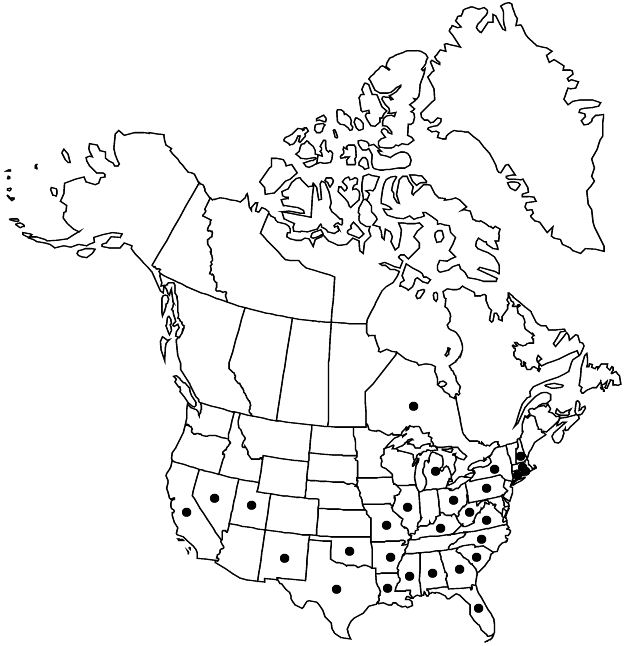Cucumis melo subsp. melo
Plants andromonoecious. Stems glabrous or sparsely villous. Hypanthia pilose to lanate, hairs spreading. Pepos edible, broadly ellipsoid to subglobose, 10–20+ cm diam., rind tan, yellowish, lemon yellow, light yellowish green, dark green, or light orange, smooth, ridged, netted, warty, or scaly; flesh orange to yellowish or green, juicy, sweet.
Phenology: Flowering Jul–Oct.
Habitat: Gardens, fields, field edges, trash heaps, garbage dumps, lake shores, roadsides, ballast, sometimes volunteering from past plantings
Elevation: 20–300 m
Distribution

Introduced; Ont., Ala., Ark., Calif., Conn., Fla., Ga., Ill., Ky., La., Mass., Mich., Miss., Mo., Nev., N.H., N.Mex., N.Y., N.C., Ohio, Okla., Pa., R.I., S.C., Tex., Utah, Va., W.Va., w Asia, w Africa, also in West Indies
Discussion
Plants of subsp. melo outside of cultivation in the flora area mostly are the dessert melons; var. cantalupo and var. inodorus.
Main cultivar groups of subsp. melo:
a. Cucumis melo var. cantalupo Seringe. Asia; pepos medium-large, rind smooth, scaly, or netted, variable in color, aromatic with sweet, juicy flesh, dessert melons; andromonoecious. Formally a nomenclatural synonym of C. melo var. melo; the name var. cantalupo Seringe predates var. cantalupensis Naudin, which is often used for this dessert melon.
b. Cucumis melo var. inodorus Jacquin. Europe (Spain), Asia; pepos large, winter melons, with non-aromatic, non-climacteric and long-storing fruits, rind thick, smooth, wrinkled, or warty, dessert melons (honeydew, winter melon); andromonoecious.
c. Cucumis melo var. melo. Asia, Africa; pepos large, flesh sweet, rind netted, warty, or scaly, wild form of dessert melons; andromonoecious.
Selected References
None.